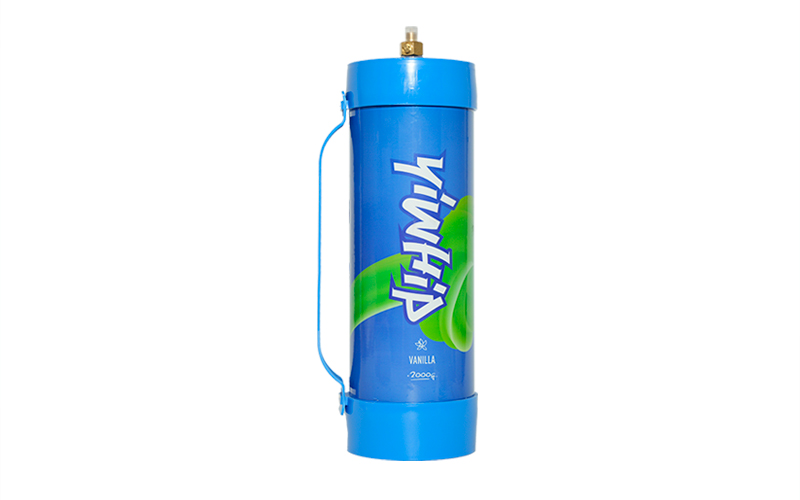If you're familiar with the modern culinary or barista scene in Mexico—particularly in cafés and dessert shops—you’ve likely encountered the humble but increasingly essential whipped cream charger. These pressurized cartridges, often no bigger than your thumb, contain nitrous oxide (N₂O) and play a crucial role in instantly aerating dairy or alternative cream blends. What most users never see, however, are the less-than-visible secrets buried deep within the industry—an ecosystem of manufacturing, logistics, sustainability, regulation, and consumer perception. This article aims to peel back the aluminum casing and expose 5 under-the-radar truths about this niche yet growing market, particularly from a perspective relevant to the Mexican consumer, food entrepreneur, and hospitality business owner.
A Hidden Climate Cost Behind Every Puff
You might be surprised to learn that while whipped cream chargers are often used as a convenient shortcut for café staff or home bakers, they also have environmental implications far beyond the foam they create. Each charger releases a small but measurable amount of nitrous oxide—more potent per molecule than carbon dioxide when it comes to atmospheric warming. While individually insignificant, cumulative emissions in urban hubs like Mexico City or Guadalajara could add pressure to an already strained local climate scenario.
Many companies tout stainless steel disposability as being more "eco-conscious" compared to aluminum-based cans, but recyclability alone doesn’t negate greenhouse effects once those gases hit the atmosphere. Consumers may unknowingly choose the easier method of preparing fresh toppings without grasping this broader implication—especially as there's little transparency at the retail packaging level.
Quality Differences Aren’t Equal Across Chargers: Know What’s Inside
In markets like Mexico where locally manufactured food tools and imported foreign equipment both compete on price and prestige, **whipped cream chargers** can dramatically differ based on their internal gas mix and cylinder purity. Some lesser-known brands introduce impurities into the nitrous stream—such as excess moisture—that affect texture, stability, even taste. A café serving desserts to discerning clientele needs not just speed, but also consistency in quality that some budget-friendly models simply can't deliver.
This distinction often isn't communicated effectively to wholesale purchasers either because brand trust plays a large enough part of buying behavior in the service sector. However, experienced pastry chefs who've worked globally notice subtle differences: the smooth mouthfeel of high-purity N₂O-infused cream versus gritty alternatives caused by inferior propellant handling and storage conditions during shipment.
Dangers in DIY & Overuse Scenarios Are More Common Than Reported
Among certain subcultures or underground social scenes—notably among young crowds experimenting at private events—chargers sometimes serve unconventional, and unsafe purposes beyond food use. Known colloquially as "whippits" elsewhere, their off-label use for psychoactive effects continues quietly despite public warnings in several countries. Mexico is beginning to report anecdotal spikes among adolescents and partygoers, raising eyebrows from both parents and authorities. Additionally, improper disassembly or attempted refill operations by amateurs have caused injuries related to sudden gas release and metal shrapnel.
From a hospitality regulatory lens in Mexico, these non-traditional uses complicate supplier liability and pushback from policymakers, even though legal usage itself remains unrestricted—as opposed to controlled recreational chemicals. As awareness spreads, expect stronger labeling standards soon, potentially affecting sales and distribution patterns in the future if laws evolve further.
No Standardization Means Big Brands Play by Different Rules
While major manufacturers like iSi dominate the international stage and set perceived industry benchmarks for safety and reliability in whipped cream chargers, many generic brands take different liberties—some cutting costs through lighter-weight capsules or recycled gases without proper sterilization between processes. Unlike pharmaceutical-grade nitrous systems which operate under stricter oversight, gastronomic ones exist in a much greyer zone.
Mexico imports nearly all its supply directly, so quality control rests on distributor audits and factory specifications—a process rarely reviewed outside of commercial litigation or complaints by professional customers. Without enforced national standards regulating nitrous source material purity or gas containment integrity, end buyers face uncertainty over long-term health impacts or equipment longevity due to corrosion risks stemming from low-end charger use.
Eco-Friendly Alternatives Still Have High Cost Barriers in Mexico
Sure, some sustainable alternatives to canned versions—like reusable whipping siphons or nitrogen injection systems using compressed-air sources—are becoming viable elsewhere. Europe, in particular, sees aggressive pushes from eco-conscioucous restaurant groups towards reducing disposable waste footprints via these devices.
However, such advanced solutions come at considerable capital investment. For smaller cafes in Mexico where startup margins are tight and access to credit is still a constraint for many SME players, the idea of paying 3–10x more per unit for a reusables-driven solution remains unrealistic. As such, even with growing awareness around sustainability topics, economic feasibility remains the chief barrier to change in everyday culinary tool adoption patterns south of the border.
Conclusion
What starts out as a tiny tin meant solely to make frothy textures on desserts ends up being far more complex than most imagine. From hidden carbon footprints embedded in mass distribution to unpredictable safety hazards emerging from misuse, and fluctuating quality standards that leave restaurants questioning reliability—it’s clear the whipped cream charger world in Mexico has layers few explore upfront.
For consumers, informed purchasing—even something as seemingly inconsequential as a dispenser—now includes evaluating ethical and environmental footprints, especially in today's socially conscious age.
Key Points:
- Chargers pose unseen but significant micro-level contributions to greenhouse gas emissions.
- The purity level of gas differs across global producers, impacting food aesthetics and performance.
- "Recreational" inhalation poses rising health concerns among youth circles in multiple cities.
- Lack of standardization means brand reputation isn’t always tied to technical quality guarantees.
- Ecopreneur solutions exist but remain too expensive for scalable deployment across Mexico’s food services.
Staying updated with these behind-the-scenes realities not only ensures safer and more sustainable kitchen habits; for entrepreneurs and retailers alike, it becomes a competitive advantage worth investing knowledge in sooner rather than later. Ignoring them risks not just operational inconsistency but potential reputational fallout once public perception aligns closer with data-driven insight.

